When they published Superman, the Golden Age began. When they redesigned the Flash and Green Lantern, the Silver Age began. But the Bronze Age is defined by a hash of ideas, a revival of attitudes, and a few assumptions no one wants to talk about.
Generally, the Bronze Age is taken as being from 1970 to 1985 with more realistic plot lines and social concerns in areas like racism, poverty, overpopulation, and corruption; the addition of monster titles and barbarians; the death of long-term characters who were supposed to be untouchable. The shorthand is aiming comics at a slightly older audience.
Much of this would be a nonsense, in that the Bronze Age trumpets socially relevant plots which were used in comics in the Golden Age. Don’t forget, Superman was tackling wife beaters, slum lords, and alcoholics before he could fly. And, exactly how socially relevant is it to worry about vampires? And how much of a breakthrough is it to publish stories about vampires in the seventies when Gold Key was on that topic in the sixties? And why is it when blacks get into comics, it’s a new age, but to hell with gays or women actually being treated as more than boobs on a stick?
In some ways, the Bronze Age isn’t something new as much as it denotes the end of an oppression. Remember Wertham? That guy who said comic books were corrupting America’s youth? Well, DC and Marvel got on board to America’s solution, the Comics Code Authority. If there is any real change it is that this censor lost control. Since Gold Key never signed up for the Code, they could do vampires, werewolves, zombies, and any other monster that the Code banned.
People left and the whites-or-white-facial-features-if-they’re-alien rule got increasingly left at the door. Unfortunately, most of the early examples are clichéd racial stereotypes. Asians with martial arts, blacks from the jungle or the ghetto, and so on. The Bronze Age is basically a period where comics tried to shake off what went before. Gone were things like the Superman robots, the dozens of types of kryptonite, and the people in charge of Batman tried desperately to make people forget the television show.
And they did to Green Arrow what they did to the Flash and Green Lantern. Had that been done when the DC superhero universe was depopulated, people would have noticed how much of a turning point it was. As it is, no one seems to have recognized, which is kind of strange because Green Lantern was standing right there.
From 1941, when he and Speedy first appeared in More Fun Comics 71, to 1969 when Green Arrow was recast, he was a third stringer at best. He was the fourth archer in comics and the fifth archer superhero if you include the Green Archer, from a novel of that name made into a movie serial which partly inspired GA. The first three were the Arrow, the Spider (often called by the title of the series, Alias the Spider), and the Golden Arrow. A month after Green Arrow, the Green Knight came out: he was an archer dressed in green with red boots and gloves just like GA. What Green Arrow had that the others lacked was trick arrows: arrows that blew up, flashed, had smoke bombs, and the like.
That’s because Green Arrow was influenced by Batman. So he had the Arrowcar and the Arrowplane, which makes sense. His headquarters was the Arrowcave, which doesn’t. When the police needed him, they sent up a flare shaped like an arrow, the arrow signal. And he carried a utility belt on his back.
Of the heroes of the forties, most people remember Superman, Batman, and Wonder Woman stayed in print into the Silver Age. But Aquaman, Green Arrow, and Speedy were three more heroes who made the long walk from Golden Age to Silver Age. Green Arrow, Speedy, and Aquaman shared one advantage: they were created by the same writer, Mort Weisinger. When Weisinger became editor, his creations caught a break and survived.
Then came the revival. A Flash was reworked from the ground up. There was a new kind of Green Lantern and his new interplanetary cop story was stolen for Hawkman. While they were at it, they revived the Justice Society of America. But Society was too hoity toity, so it was the Justice League in 1960, and Green Arrow wasn’t in it. Everyone wonders why he wasn’t. The plainest fact may be Weisinger had very few people to pick from, so he included the Martian Manhunter and Aquaman, but even he thought Green Arrow was too dull. This might have been an issue if (as he planned) Superman and Batman were going to be downplayed: the JLA needed color. Talk in the office must have convinced him otherwise, and he made Green Arrow the first new member.
So Green Arrow survived the loss of his backup position in Adventure by being in the Justice League of America. And there he would stay, a minor figure of little note until 1969 when he was reworked by Neal Adams and Dennis O’Neil. In Brave and Bold #85, Neal Adams gave him a goatee and beard, making him unique at the time as a superhero with facial hair. He was given a new costume that didn’t look like it came from K-Mart. It was all in shades of green, kind of like Ted Kord’s Blue Beetle outfit being shades of blue. The quiver became three times its former size. The bow could now be folded up and attached to the quiver freeing Green Arrow’s hands.
Dennis O’Neil saw that change and liked it so he gave Green Arrow a rougher personality to go with the new costume. However, he started the new personality just before the new costume came to the JLA. When Green Arrow breaks into a shed and looses an arrow at some crooks. The arrow dyes their skins, and Green Arrow thinks that dye will make them identifiable if they get away. Then he punches them with the thought balloon, “Of course, I don’t intend to let them get away.”
This is a change from where the Penguin realizes the guy in the Green Arrow costume must be Batman, because the guy’s punching the Penguin. For years, Green Arrow didn’t fight much, he tended to loose arrows. But so far, the change is on the level of putting a costume on the Crimson Avenger and the Sandman: you cannot make changes by fitting in. Green Arrow was going to stop doing that.
Oliver Queen lost his fortune. More correctly, he had his fortune stolen from him by fraud. Strangely, the honest rich guy got cleaned out by an embezzler and trumped up fraud charges. Oliver does not ask Batman to help prove his innocence and get his money back. He accepts the loss and says he’s happier poor than he was rich.
Oliver Queen becomes a far-left iconoclast. No one notes that he is angry at the system that failed him. In various stories Oliver Queen worries about a child who does not have a safe place to play. He tears strips off Snapper Carr when Snapper betrays the JLA because they’re “so blasted different.” Green Arrow makes the point that diversity is good. But there was more to come.
Teaming up Green Arrow and Green Lantern, putting them in an old pick-up truck, and having them go through the backblocks of America has long been hailed as a masterpiece. The New York Times, the Wall Street Journal, Newsweek, and New York mayor John Lindsay all praised the series. It was said to be a sign that comics were growing up.
This ignores the big change that permitted that new direction: the Comics Code Authority was dissolving under the weight of its own stupidity. Before, Captain Marvel had to deal with racial issues by having Talky Tawny, a bipedal talking tiger run into prejudice; Star Hawkins had to deal with issues by having robots stand in for blacks, older workers, and homosexuals. And let’s not forget, while Greens Arrow and Lantern were concerned about blacks and the poor, older workers and homosexuals could go hang themselves and, in the course of events, many did.
Interestingly, the censorship comics received in the fifties was imposed on Hollywood from the thirties. The two stories have many interesting parallels, from imposition to liberation. Both had public opinion whipped into fervor by particular interests who said the medium was destroying the moral fiber of Americans. There were calls for sweeping legislation which was answered by partial legislation. There was a voluntary organization to organize the industry that was deemed not to work, and a second, stronger organization was imposed which was backed by the most powerful companies in the industry which gained more power in the industry as a result.
In both cases there were sometimes substantial companies outside the organization. In movies, there were art-house films and porn, in comics there was Gold Key and ‘underground’ comix.
Eventually, in both cases, the rules imposed yielded to a shift in society and a new group of activists. But in both cases, though the new groups could shed controls, they couldn’t force the buying public to like the new stuff. The seventies saw a lot of bad movies and…
Though articles praised Green Lantern co-starring Green Arrow, the audience did not in any serious way, like buying copies. The series lasted just over a dozen issues. During that arc, Green Lantern was frequently challenged for his conformist views and his willingness to obey the rules. And he was confronted and told how he worked for the blue skins, had done considerable amounts for the orange skins and the purple skins, but he’d done nothing for the black skins. Can he say why? Ashamed, Green Lantern says he can’t.
Here is the strength and weakness of the Bronze Age: why it had to exist and its greatest weakness. It tried to turn to the real world, the world you and I occupy. So comics could again have stories dealing with wife beating, alcoholism, poverty, and all those things they once had to pretend didn’t exist. It was a liberation from censorship, from being a children’s-only concern.
But to do that many comics tried to not be comics. They stood (rather late) against racism. But in a universe where alien races are known to exist, why is the social status of blacks on Earth in America more important than the very survival of people of other skin colors? In order to make an argument against racism, the comic itself became racist. You can say there are no people with orange skin but to say racism is OK if nobody objects is to reduce opposition to racism to nothing more than giving blacks rights as a matter of convenience and possibly just to get power for yourself. It’s kind of the 47% moment of comic books. The only defense is that the challenge is simply to remind Green Lantern to do at home what he does elsewhere. But that reduces opposition to racism to mere me-too-ism. It could have been raised higher by asking what the principles of the Guardians, the Corpse, or Green Lantern himself were, but that opportunity was passed up.
They also trumpeted their maturity by bringing in things like drug use. So comic book readers were expected to be floored by plot devices – like Speedy’s heroin addiction – which had become standard in novels and movies.
Like movies, when comics threw off censorship, it became like the old German saying, whatever isn’t forbidden is a duty. But in the case of Green Arrow, one set of tropes met another and people missed what was happening.
As the pair traveled, it was usually Green Lantern who was challenged. It was Green Lantern who learned to question the authority and wisdom of his bosses, the Guardians. It was Green Lantern who hadn’t realized how racist and corrupt society was particularly in the back-blocks because it’s always permissible to condemn hillbillies.
And in one moment, all that was reversed because urban, kind of spoiled Speedy was a junkie. Green Arrow’s self-assured semi-anarchist far-left notions washed up on a reef. We are not merely adults in a society, we have children and the children have no choice about how they’re raised. Whether parents do it, whether the state does it, or whether a state-appointed guardian like Oliver Queen does it, the child is on the receiving end. At the time families were often condemned by those on the left for being patriarchal. Members of the Students for a Democratic Society called for the murder of white babies. And yet here was Green Arrow faced with the parental issue of all time. The political issue of all time. When does your child become their own person? If authority is so wrong (and as we’d seen in the stories it often was) then will each individual do better than that authority? In the case of Speedy, no.
That was a serious issue, but it conflicted with the trope of the superhero as an example, the person we have to follow. Had it come later, the story might have had greater impact. But as it is, it’s a kind of family secret that gets not forgotten but glossed over. Roy Harper, Speedy, got off drugs first try. Not only that, he used drugs for all that time and had no residual physical effects to worry about. It hasn’t caught up with him, his internal organs don’t seem to have been damaged.
More than that, Roy Harper didn’t need to go through the usual matter of getting off drugs and finding himself emotionally at that point where he decided to take up drugs. He didn’t have to fight his way through that conflict that he had avoided by taking drugs in the first place.
But what the story did was open a floodgate. Every hero who took a chemical to get their powers suddenly wasn’t just taking a drug, they were taking a gasp-drug. Look at Hourman, senior and junior. What had been a step too far for fans then would now be a step not far enough.
What Green Arrow did was provide the fulcrum and the crowbar that moved the comic world. He was not alone in that, not even in DC. One immediately thinks of Swamp Thing who provides a complimentary function. There was a new interest in barbarians, including the Warlord, Travis Morgan, who is unique in his own right.
Green Arrow had been one of several archers of the Golden Age. He was rebuilt from the ground up and made distinct from other superheroes. Superman and Batman were once outsiders, too, but they had been tamed by the Comics Code Authority. Green Arrow threw off that yoke. He would cease to be a conventional left-wing character, and instead became a kind of gunslinger with a bow, not a gun. When he objects to someone, they die. This idea has carried to Arrow, the television series.
But the Bronze Age ended both with the DC implosion and Crisis on Infinite Earths. Green Arrow took a series of turns, some forward, some not so much. Green Arrow is rich again, he’s died and been resurrected, and generally gone through typical superhero tropes. He even got a new Speedy, Mia Dearden, and real life was brought into it when it was discovered she was HIV positive. But when the teacher is resurrected from the dead, you might of guessed HIV won’t be that much of a problem. The bigger problem is no one knows what to do with her so she gets unceremoniously dropped and fans, once again, have to check all the refrigerators they see. Still, in Green Arrow, admission of the existence of child prostitution pushed the boundary. However, no major publications noticed. What he did before changed what we expect from a comic so it doesn’t loom so large now. Green Arrow was one of those heroes who steered comics from CCA shallow waters to deeper seas, where it’s harder to make a splash. But Green Arrow may do it, especially if the TV show proves a success. But he should always be the face of the Bronze Age in the same way Flash and Green Lantern are the face of the Silver Age and Superman is the face of the Golden Age.

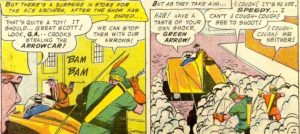
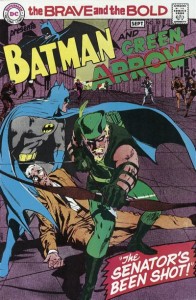
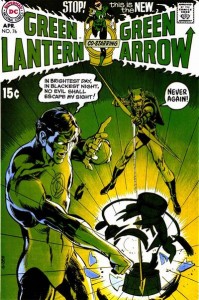
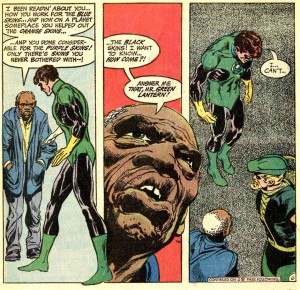
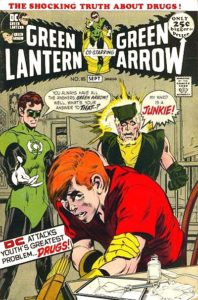
Comments are closed.